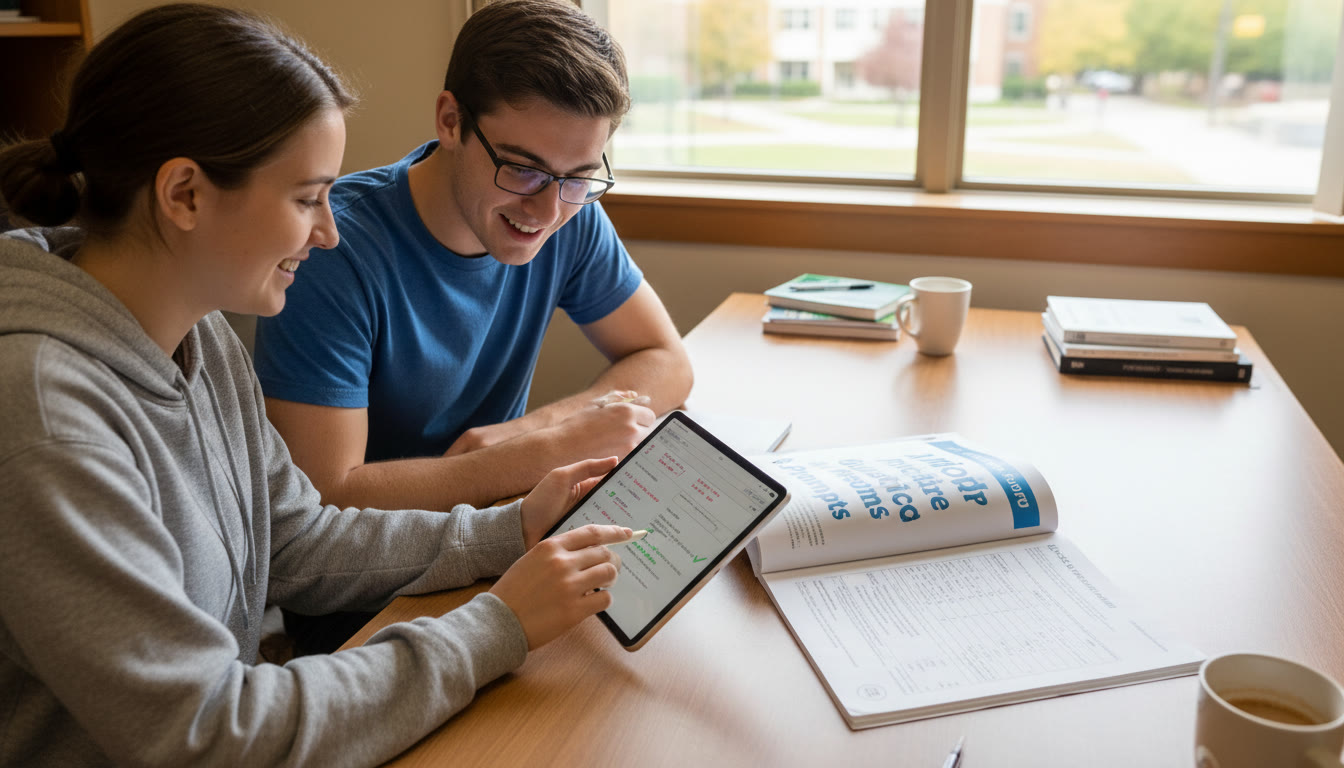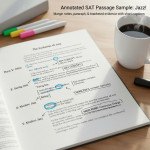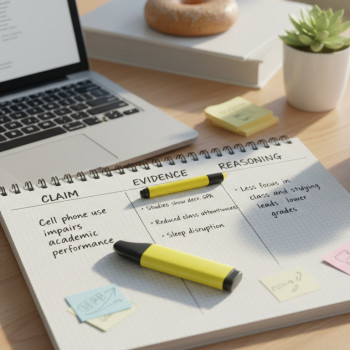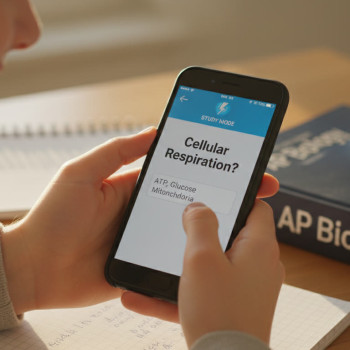AP vs SAT: Practice Materials Official vs Third-Party
Why this matters (and why you should care)
If you or your student are slogging through study schedules, flashcards, and late-night practice tests, the question of which practice materials to use isn t just academic it s strategic. AP exams and the Digital SAT are high-stakes checkpoints that can influence college credit, placement, and admissions. Choosing the right practice materials can save months of wasted effort and unlock real score gains.

Quick snapshot: Official vs Third-Party the headline differences
Before we dig deeper, here s the short version you can pin to your fridge:
- Official materials come from the College Board (Bluebook practice for the Digital SAT; AP Classroom, AP Daily, and released free-response questions for AP). They mirror exam format, scoring, and question style most faithfully.
- Third-party materials (commercial books, apps, tutoring platforms, and practice question banks) often give more practice volume, alternate explanations, strategies, and adaptive drills but question quality and alignment with the real tests vary widely.
What official actually means for AP and Digital SAT
Digital SAT Bluebook and Official Practice Tests
The Digital SAT experience is unique: it s delivered through a testing app, and the College Board provides official practice in that same environment. These official practice tests replicate the digital interface, timing, and tools (like built-in calculators, flagging, and navigation) so you can rehearse under realistic conditions. If your testing day will be on the Bluebook app, practicing in Bluebook is the single best way to remove surprises.
AP AP Classroom, AP Daily, and released exam questions
For AP exams, the College Board s AP Classroom is the center of gravity. It gives teachers and students access to practice questions, progress checks, and AP Daily videos led by experienced teachers. The College Board also publishes free-response questions and scoring guidelines from prior exams those real, former exam questions are gold because they show graders expectations and authentic question framing.
Strengths of official materials why they re indispensable
1) Authenticity of content and format
Official practice is written or curated by the organizations that build the exams. That means the phrasing, structure, and emphasis match what you ll see on test day. For AP free-response questions, the scoring rubrics and sample student responses are especially valuable because they teach you how graders award points. For Digital SAT, practicing in the Bluebook app familiarizes you with the adaptive format and the digital tools.
2) Diagnostic clarity and feedback
Official platforms often provide the clearest mapping between practice performance and real exam expectations whether that s My Practice score reports for the SAT or the feedback from AP Classroom progress checks. When you re trying to pinpoint skill gaps, that direct line to exam-style performance is critical.
3) Accessibility and accommodations replication
The official practice tools replicate approved accommodations and assistive technologies, making them essential for students who will test with accommodations. Practicing in that environment reduces logistical stress and reveals what to request ahead of time.
Strengths of third-party materials why they re helpful
1) Volume and variety of practice
Third-party publishers and apps often offer thousands of practice questions and hundreds of micro-lessons. If you need repeated exposure to a narrow skill (like algebraic manipulation or rhetorical analysis), third-party banks let you drill until the pattern sticks.
2) Different explanations and teaching styles
Every human learns differently. Some third-party resources break down a problem in a way that finally makes sense to a student who s stuck. They provide alternate scaffolding, mnemonic devices, and step-by-step walkthroughs that complement the official perspective.
3) Adaptive practice and gamified motivation
Many apps use adaptive algorithms that create a dynamic practice path based on performance. For students who respond to daily streaks, levels, or targeted micro-practice, these tools can keep momentum going through long study seasons.
Where official materials fall short (and what to watch for)
- Quantity limits: Official practice is often limited in volume. For AP, released FRQs exist, but new, secure practice exams are typically available only through AP Classroom or to teachers. For SAT, the official full-length digital tests are fewer than some third-party offerings.
- Less coaching on strategy: Official content focuses on what questions look like, not always how to coach students through study habits, time-management hacks, or mnemonic tricks.
- Sometimes slow to add recent practice: As exam formats evolve, official releases may lag in volume relative to rapidly produced third-party content.
Where third-party materials fall short (and red flags)
- Alignment issues: Not all third-party questions are written to the same standards. Some mimic the tests well; others don t. Low-quality practice can teach bad habits.
- Overemphasis on tricks: Some test-prep shortcuts work for certain students in the short term but collapse on novel questions. Rote tricks without conceptual grounding can harm AP free-response performance and the SAT s reasoning sections.
- Opaque scoring and feedback: Many third-party platforms show a score but don t offer the granular feedback or scorer-style rubrics the College Board provides.
How to combine both worlds: a practical game plan
You don t have to pick a side. A hybrid approach uses the authenticity of official materials as the backbone and the breadth of third-party resources as the muscle that builds stamina and fills knowledge gaps. Here s a step-by-step plan you can use:
Phase 1 Baseline and familiarization (6 8 weeks before focused prep)
- Take one official full-length practice test in the same format you ll test in (Bluebook for Digital SAT; AP practice exam or released FRQs for AP). This is your baseline.
- Use official scorer rubrics (AP) and My Practice feedback (SAT) to identify 3 4 target areas.
Phase 2 Concept-building and targeted practice
- Layer third-party resources for micro-practice on weak skills (for example, targeted algebra sets, grammar drills, or rhetorical analysis exercises).
- Alternate: for AP, practice with released free-response questions and time yourself, then use third-party guides or teacher feedback to refine structure and timing.
Phase 3 Simulation and polish (2 3 weeks before test)
- Do at least one more official full-length practice test under real timing and environment rules. For AP, time-pressured FRQ sections with a strict rubric is a must.
- Use official answer explanations and scoring guidelines to calibrate your approach. Then, supplement with third-party timed drills to fix lingering speed issues.
Practical comparison table: Official vs Third-Party (AP and Digital SAT)
| Criteria | Official Materials | Third-Party Materials |
|---|---|---|
| Authenticity of questions | Highest produced or curated by College Board | Variable some align well, others do not |
| Format replication (digital interface) | Yes Bluebook and AP digital previews | Usually no simulated interfaces differ |
| Volume of practice | Limited but high-quality | Large thousands of items |
| Explanations and scoring rubrics | Detailed official rubrics and sample responses (AP) and detailed explanations (SAT) | Often helpful but not standardized |
| Adaptive practice and personalization | Some official personalization (score reporting, My Practice feedback) | High many apps tailor drills and lessons |
| Best use | Final calibration, realistic practice, scoring insight | Skill-building, review, motivation, exam strategy |
Smart ways parents and students can evaluate third-party resources
Not all third-party content is created equal. Here are quick heuristics to separate the signal from the noise:
- Does the provider show sample items that closely resemble official questions (not just flashy visuals)?
- Are explanations conceptual and stepwise, or just tricks and shortcuts?
- Does the product transparently explain its scoring model and how it maps back to real exam scores?
- Are there real teacher or tutor-led explanations not just algorithmic answers?
- Can you try a free sample? A short trial will show whether the voice and pedagogy match the student s needs.
Study routines that actually work (and how to schedule official vs third-party practice)
Consistency beats cramming. A weekly rhythm that balances both official and third-party practice can keep momentum without burning out the student. Here s a sample weekly schedule for a student preparing for both AP and the Digital SAT during a busy school year:
- Monday: 30 45 minutes Concept review using third-party micro-lessons (math fundamentals, grammar rules).
- Tuesday: 45 minutes Practice topic questions in AP Classroom or Student Question Bank (if available) and review rubric points.
- Wednesday: 30 minutes Adaptive drill app session focusing on speed for SAT Math or Reading.
- Thursday: 45 minutes Timed practice of a Digital SAT section in Bluebook or official PDF practice for paper accommodations.
- Friday: 30 minutes Free-response practice (AP) write an essay or response, then self-score using the official rubric.
- Weekend: 2 3 hours split one full official practice section (or full practice test every 2 3 weeks), and guided review of missed items with targeted third-party drills.
How tutoring fits in when personalized help makes the difference
Practice materials alone won t fix every problem. Many students plateau not because they lack practice but because they re practicing the wrong way. That s where 1-on-1 tutoring shines. Personalized tutors can:
- Diagnose root causes of repeated errors (conceptual gaps vs careless mistakes).
- Create tailored study plans that prioritize high-leverage topics and match the student s schedule.
- Offer targeted feedback using official scoring rubrics (especially valuable for AP free-response practice).
For example, Sparkl s personalized tutoring blends expert tutors with tailored study plans and AI-driven insights to create focused practice cycles using official tests for calibration and third-party drills to build speed and endurance. When tutoring guides practice selection, the result is fewer wasted hours and more measurable improvement.
Common myths busted
Myth: Third-party practice will always boost scores faster because it s more intense.
Not necessarily. Intensity without alignment can lock in bad habits. Third-party practice helps most when it targets weak content identified by official diagnostic tests.
Myth: If I only use official materials, I ll be under-practiced.
Official materials are essential but sometimes limited in volume. Combining them with high-quality external drills is often the most efficient path as long as those drills reflect official expectations.
Concrete examples: turning practice into higher scores
Here are two short, real-world style scenarios that show how students can translate practice into measurable gains:
Scenario A AP United States History student
Problem: Great factual knowledge but weak on FRQ structure and timing.
- Step 1: Use released FRQs and official scoring guidelines to learn exactly how points are awarded.
- Step 2: Write timed answers and self-score using the official rubric.
- Step 3: Have a tutor or teacher review the first three responses for feedback; then practice with targeted third-party drills that build concise writing and thesis formation under time pressure.
- Result: Improved rubric alignment and a reduction in lost points for structure and evidence often a noticeable jump in FRQ component scores.
Scenario B Student prepping for the Digital SAT
Problem: Good content knowledge but panics with the digital interface and adaptive timing.
- Step 1: Take an official Bluebook practice test to experience the interface and gather My Practice analytics.
- Step 2: Use third-party adaptive drills to speed up weak item types (for example, sentence completion or grid-in algebra), while doing at least one official section per week in Bluebook.
- Step 3: Use a tutor occasionally to simulate testing conditions and practice time-management and navigation strategies native to the digital environment.
- Result: Familiarity with Bluebook reduces test-day anxiety and improves pacing, converting partial answers into full, scored responses.
Final checklist: What to use and when
- Always start and end with official practice: baseline, mid-point check, and final calibration should be official.
- Use third-party materials to multiply targeted practice on weak skills and to keep daily practice varied and engaging.
- For AP FRQs, always cross-check your answers with official scoring guidelines and sample responses.
- For the Digital SAT, practice in Bluebook whenever possible, and use third-party apps to build speed between official tests.
- If possible, get periodic 1-on-1 tutoring to tighten strategy, fix persistent errors, and create a personalized study plan. Tutors can direct you to the best mix of official and third-party practice for the student s unique profile.

Parting advice study smarter, not just harder
Success on AP exams and the Digital SAT isn t about hoarding practice tests or memorizing tricks. It s about deliberate practice: authentic official calibration, targeted third-party drilling on specific weaknesses, and thoughtful feedback. Keep an eye on quality over quantity. Use the College Board s official materials to anchor your study and third-party tools to accelerate skill-building. When the plan is smart and personalized whether guided by a dedicated tutor or a tailored program like Sparkl that pairs expert tutors with data-driven study plans you turn practice into progress.
Remember: practice should bring clarity, not confusion. If the way you’re studying leaves you more uncertain than when you started, pause and re-center on official diagnostics, enlist a coach to interpret the data, and rebuild from there. With the right mix of official rigor and strategic third-party practice, you ll show up on test day ready calm, confident, and capable.
Ready to make a plan?
Start with one official practice test, identify three target areas, and build a two-week plan that alternates official calibration with focused third-party drills. If you want a tailored road map, a short tutoring consultation can cut months off your prep time and get results faster.
Good luck and study with intention.






















No Comments
Leave a comment Cancel